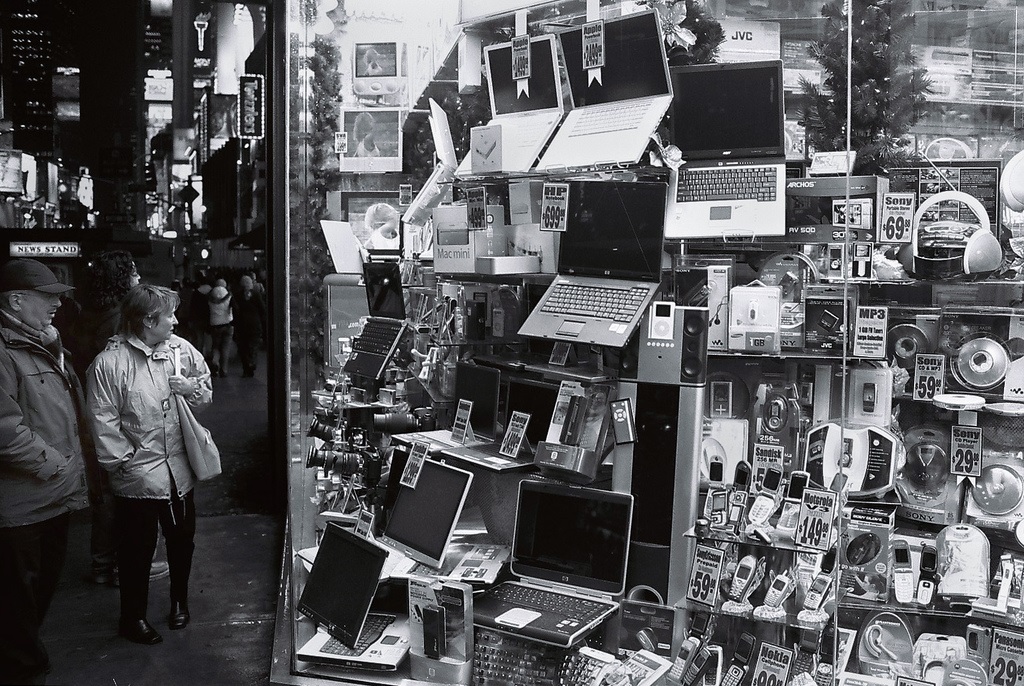The sad green bubble is the shame of high school students everywhere. You’ll see it when a group chat breaks out on friends’ iPhones. There they are, their blue balloons of conversation rich with pictures, animated gifs, stickers, song clips and music videos. And, in the midst of all that gay banter, sits the plain green speech balloon of the one student in the group with an Android phone. They can only share drab text because their messages are sent to iPhones as simple SMS, or text messages. And their poverty of media is signified by that lonely green bubble.
Every time they try to join in the reindeer games of their friends they are reminded they have a bright lime light on the end of their nose. They are not a part of the Clique of Blue. The existence of the proprietary iMessage platform is one reason so many young people who can afford it, gravitate to iPhones.
I think of the sad green bubble when I consider the coming wave of augmented reality (AR) devices. Already phones like Tango-enabled Android phones or the latest iPhones and tablets deliver these augmented reality experiences. So do phones everywhere in the hands of energetic Pokemon Go players.
And soon they’ll be added to by hordes of Harry Potter fans. Next year Niantic, the company behind Pokemon Go, will be releasing Harry Potter: Wizards Unite. The augmented reality version of that magical franchise will allow players worldwide to capture fantastic beasts no matter where they find them. The cryptozoological menagerie will be projected into the real world via players’ phones.
In the next few years, augmented reality will become a common overlay on the real world. An owner of an AR device will be able to walk down a street lined with shops and see bobbing information bubbles with ratings,comments and special offers inside them.
Empty plates in restaurants will be filled with sample meals from the dining establishment. You’ll be able to rotate, zoom in on and order the items all from your phone. Early versions of each of these experiences already exist.
A couple of months ago, IKEA released an app that lets you plunk down their furniture in your own rooms to see how they look. Then, of course, you can buy the items on the spot. Soon assembly instructions will appear over top of a jumble of pieces. All you’ll need is an Allen key and an AR app.
And, by 2020 or so, AR-enabled smartphones will be replaced by AR glasses. That eyewear, offered by fashion-forward vendors, will float information over the real world as if it were on an acetate overlay. Google and Microsoft have already released crude and clunky versions of these devices. Apple is rumoured to be developing AR glasses for release in the ’20s.
So, here’s what all this has to do with the sad green bubble. When these devices are released, they will be expensive, exclusive and excluding. Consumers who can now afford to shell out nearly CAD $2,000 for a top-of-the-line iPhone X or Galaxy Note 8, will be first in line for the novel AR glasses. But it will be years before the technology trickles down to less expensive devices. Only then will low-income earners be able to afford them.
Until that time they may well be seeing a city, interacting with people and attempting to get better employment devoid of what might seem to be an extra sense. Well-to-do folks will see a world overlaid with advantageous information and will be able to share and store that information easily. They will be a part of the Blue Clique, with everyone else stranded in the sad green bubbles of unenhanced vision. There will be a class structure built on sight. It will literally be hard for the disadvantaged to see their way clear to make a better life for themselves.
We’ve seen this kind of technological divide before: those with computers, those without. Those with broadband, those without. In both cases, the playing field, in all but the more extreme cases and challenging geographies, is beginning to level. But as the dozens of people hunched over public library computers attest, there still remains a home team advantage to those who have a home computer.
It may well be that the future may not be so polarizing, but seeing the world through rose rather than tinted spectacles won’t augment the reality of as many of us as possible.
Tech companies have been faulted for not paying much attention to the societal impact of their inventions and services. Cool conquers consequence. But AR isn’t just about creating a “bicycle for the mind,” as Steve Jobs once called a computer. It isn’t about getting a cheap bed for the night or an easy ride. AR is about altering how we see.
If the developers of that technology don’t have a worldview that encompasses the society beyond R&D labs, their blindspot will mean that all but the most affluent will be stumbling about and hitting brick walls as surely as if someone turned out the lights.
Wayne MacPhail has been a print and online journalist for 25 years, and is a long-time writer for rabble.ca on technology and the Internet.
Photo: Oliver Lavery/flickr





